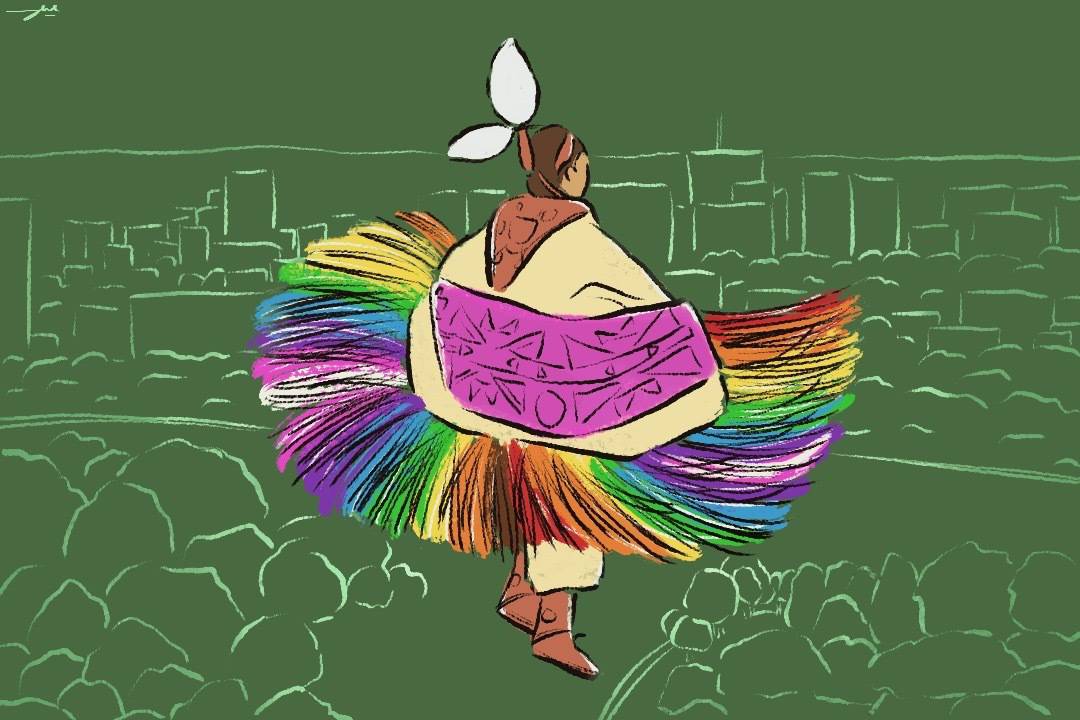When people ask me where I am ‘really’ from, because my response of being Canadian doesn’t suffice, I tell them that my dad was born in the Philippines. I say that my grandparents are immigrants and that I am a proud Filipina. For the longest time, I did not say I was also Indigenous. I did not say that my mother grew up in Northern Ontario, or that my grandfather worked tirelessly to be a recognized member of the Chapleau Cree First Nation, because who was I to claim Indigeneity? I was born and raised in Ottawa. I do not speak Cree. I do not know the culture.
My genes, blood, and family tree carry the culture of Chapleau Cree, but it is not who I am. I have spent the majority of my life distancing myself from my Indigenous roots because I felt like a fraud. I believed that identifying as Indigenous should be reserved only for those who understood what it meant to be Indigenous.
In school and through the media, I have learnt so much about the collective Indigenous pain, about a history of blood, sweat, and tears. Residential schools, the Sixties Scoops, the Indian Act, and years of systemic discrimination — events which have profoundly affected my family, yet fortunately, I haven’t experienced them directly. I was led to believe that these tragedies were the Indigenous identity: that to be Indigenous, I must relate to suffering and trauma.
Only last year did I realize this was, frankly, a stupid notion. In the second semester of my first year, I took a class called CDN198 — Canada, Colonialism, and Settler Relations. The final term paper asked us to explain how we fit into the Indigenous narrative here in Canada. Although I wrote the paper in about two weeks, it led to months of self-reflection and wondering not only about how I fit into the Indigenous narrative, but also about how I would like to fit into the Indigenous narrative. This reflection awoke me to the fact that I am “Indigenous enough.” I owed it to myself and the generations that came before me to try and connect with my roots, to find what Indigenous joy is, and what it means to be Indigenous in the modern world.
I wish people talked more about Indigenous joys, Indigenous livelihoods, and the beauty of Indigenous cultures. I knew so much about colonialism and its devastating effects on Indigenous peoples, but I knew so little of powwows, beading, and the warmth of our community. Perhaps if colonialism had not stripped away the strength of these traditions, or if the media had celebrated our cultures, I would have known that there were ways to connect to my roots other than through the lens of settler colonialism and suffering.
It is because of my mother and the First Nations House here at U of T that I have had the opportunity to learn more about what it means to be Indigenous. I’m currently helping my mother write a book on the history of Chapleau Cree. My tasks include transcribing her interviews with Chapleau Cree members, which allows me to see where my ancestors came from and how this has shaped Chapleau Cree Nation today. This experience has truly been an honour.
I would also like to thank First Nations House for being so kind, for teaching the importance of good broth on a cold day, and for saying so kindly at the open house at the beginning of the year that “First Nations House is for all of the Indigenous people on campus, especially for those that do not feel that they are Indigenous enough.”
This is an important message to spread, especially since just under 60 per cent of Indigenous people in Canada do not live on reserves, and almost 30 per cent of the Indigenous population is under the age of 25, according to the 2021 census. I do not know the individual stories of the thousands of Indigenous youth living far from their communities. Still, I speculate that many share the same sentiment as me — feeling like an outsider in a culture that is supposed to be their own. I often think that my ancestors would not want their legacy to be in my hands: but if not mine, then whose?
It is terrifying to claim an Indigenous identity with pride, just as it is terrifying to go to First Nations House for the first time, for the second time, or even for the third time. However, it is even more alarming to think that a long history of Indigenous culture may slowly be eroded if we give into the fear of not being “Indigenous enough.”
As the world develops, cultures change, and globalization takes Indigenous Peoples to new places, neither assimilation nor colonization must win. It is never too late to learn what it means to be Indigenous. If I have learnt anything, it is that being Indigenous is a truly beautiful thing.



No comments to display.